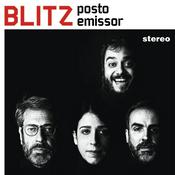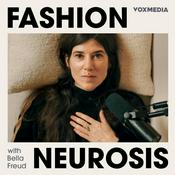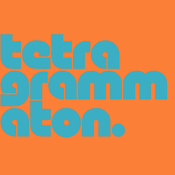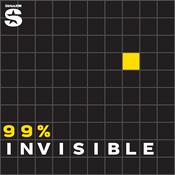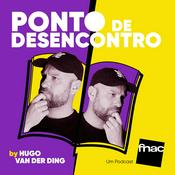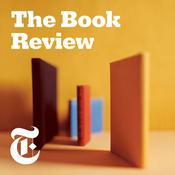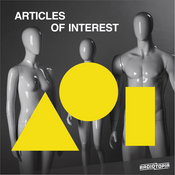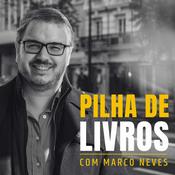62 episódios

Episode 60: Conversations with Kristine: The Art World
12/6/2025 | 1h 10min
What does it really mean to be an artist today? In this eye-opening solo episode, let’s peel back the curtain on the often-unspoken systems of the art world. From art school degrees and gallery representation to grants, residencies, and direct-to-collector sales, I will offer an honest, reflective, and sometimes humorous look at the evolving ecosystem of how art is created, valued, and sold.Key Takeaways:Photography is Art: Claiming your identity as an artist is the first step in seeing your work differently—and valuing it accordingly.Direct-to-Collector Sales Are the New Frontier: Artists no longer need to rely solely on galleries. Selling directly is now a viable, respected path.Understanding the Institution: The traditional art world—grants, residencies, commercial galleries, and biennials—still holds sway and comes with specific rules.Primary vs. Secondary Markets: Explains how art sales move from artist to collector (primary) and from collector to collector (secondary), and why it matters.Educational Pathways: A BFA may open doors in galleries, but success doesn't require formal education—especially as norms shift.Know Your “Why”: Are you in this for legacy, impact, income, or all three? Your goals determine which branch of the art world tree you climb.Conclusion:This episode is a deep dive into the broader art economy and your potential place within it. Whether you're just starting to monetize your photography or you're questioning your next move, I encourage you to zoom out, explore the full landscape, and most importantly—ask yourself: What do I really want? Because understanding the system helps you play your game, your way.If this episode sparks curiosity, don’t miss related episodes:Ep. 32 – Passion or Profit? You DecideEp. 34 – Unlocking Your Success: Your Four Biggest StrugglesEp. 35 – Building Your Dream Photography BusinessEp. 50 – Creating a Body of WorkEp. 51 – Top 10 Website MistakesEp. 52 – What It Takes to Make ItVisit afterdarkphotographypodcast.com for show notes, resources, and more ways to dive deeper.

Episode 59: Conversations with Kristine: Creativity & Change
28/5/2025 | 1h 10min
What happens when creativity doesn’t feel the same anymore? When the places that once sparked inspiration now carry the weight of memory and change?In this first episode of a new series, Conversations with Kristine, we dive into the evolving nature of creativity, what it means when your creative spark shifts, and how to navigate those quiet, uncertain in-between spaces. This isn’t a how-to or a checklist. It’s a walk through the emotional landscape of change and the gentle path back to artistic connection.Key Takeaways Creativity as a State of Being, Not a Task: Instead of chasing results or forcing output, let yourself experience creativity as a way of living. It's not about doing more, it’s about slowing down enough to notice, to feel, to be. Your art doesn’t need to prove anything. It can simply be an expression of who you are.Permission to Pause: You don’t have to hustle your way back to inspiration. This episode invites you into the “waiting place” a space where stillness is sacred, and nothing needs to happen yet. Drawing on the wisdom of Oh, The Places You’ll Go, we talk about the power of letting yourself linger there for a while.Small Nudges Over Big Breakthroughs:Big breakthroughs are overrated. Sometimes, it’s the tiniest “ping” a half-thought, a fleeting image, a quiet yes, that leads you forward. You don’t need a grand vision to begin again. You just need to pay attention.Habit Stacking with Intention: One practical tool shared is layering intention into existing habits. Kristine shares how daily post-school-drop-off walks have become sacred time for reflection, letting ideas rise gently instead of forcing them.Conclusion This episode is a heartfelt reminder that creativity doesn’t always look productive. Sometimes it looks like wandering, like waiting, like whispering ideas into a notebook with no plan at all. And that’s okay.You don’t have to have the answer. You don’t have to rush your return. But you can start by asking:Are you in a waiting place yourself? What tiny nudges have you been ignoring? And what would it look like to give yourself space, without needing to explain or justify it?Wherever you are in your creative journey, this is your invitation to slow down and listen.

Episode 58: Creativity, Connection, and Resilience
07/3/2025 | 58min
Introduction This episode explores how creativity—particularly photography—can serve as a powerful tool for building resilience, processing difficult emotions, and reconnecting with ourselves and our communities. Whether you're feeling overwhelmed by current events or simply seeking more meaningful creative practices, this conversation offers practical guidance for using photography as a pathway to greater presence and peace. Key Takeaways Understanding Our Current Reality We're living in a time of immense change and uncertainty, carrying the weight of collective stress from various sourcesThere's a difference between being informed and being consumed by the constant news cycleOur nervous systems are designed to respond to uncertainty, often making it difficult to create, connect, or truly restA Framework for ResilienceAcknowledge: Give yourself permission to name the uncertainty and stress you're carryingGet Curious: Shift from overwhelm into exploration by asking what's within your reachTake Action: Make small, intentional steps that bring you back to yourself, your creativity, and your communityThe Power of Photography as a Restorative PracticePhotography, especially night photography, naturally encourages mindfulness, patience, and presenceThe act of creating something—regardless of its "quality"—reminds us of our agency in uncertain timesPhotography asks us to slow down and connect with something greater than ourselvesLooking through a lens helps us process and relate to the world differentlySmall Creative Practices for Building ResilienceFive-Minute Reset: Take just a few minutes to photograph something that catches your eyeNotice Your Environment: Pay attention to light, color, and composition in your everyday surroundingsLet Go of Perfectionism: Remember that the value is in the act of creation itself, not the outcomeVisual Journal: Use photography to document small moments of beauty in your daily lifeBuilding Connection Through CreativityPhoto Walks: Invite a friend or neighbor to walk and take pictures togetherPhoto Pen Pals: Exchange meaningful photos with distant friends instead of just textingEditing Dates: Meet with creative friends to work on projects togetherVoice Memo Exchanges: Share audio notes about what you're noticing while creatingCommunity Art Exchanges: Organize small-scale art sharing between friendsExpanding Creative Connection in CommunitiesCreate little free art galleries for neighborhood exchanges of small creative worksPartner with camera clubs, libraries, or community centers to organize accessible photo walksEstablish community display spaces for rotating exhibitions on simple themesUse photography as a way to help people connect with their surroundings and each otherConclusion This episode reminds us that creativity isn't a luxury—it's a necessity for navigating uncertain times. When we engage in photography and other creative practices, we aren't disengaging from the world's problems but rather restoring ourselves so we can show up more fully. These small creative acts create ripple effects that extend far beyond ourselves, influencing our families, communities, and perhaps even the wider world. By finding moments of presence and connection through our art, we build the resilience needed to face challenges and continue finding light in the darkness.

Episode 57: Photoshop and Artificial Intelligence
28/10/2024 | 58min
In today's episode, I'm diving deep into a topic that's been coming up constantly in my photography communities - artificial intelligence and its role in night photography. Whether you're excited about AI's potential or concerned about its impact on our craft, I'll help you understand what's really happening with AI in our Photoshop workflows and why I believe it won't replace the magic of capturing the night sky.Key Takeaways:Let's Talk About AI in Photoshop I'll explain when you can stick with RAW editing and when you need PhotoshopWe'll explore the difference between those flashy generative AI tools and the helpful AI features already in our workflowsI'll share some of my favorite time-saving AI tools like Select Sky (with a cool trick for reflections!)You'll learn how AI is making our selection and masking work so much fasterWhy AI Won't Replace Night Photographers (Yet!) The truth about AI's struggles with accurate star patternsWhy local conditions like light pollution and atmospheric effects matterHow seasonal changes and latitude affect our night sky shotsThe importance of maintaining astronomical accuracy in our editsNavigating the Ethics of AI My thoughts on AI using our images for trainingHow to balance sharing our work while protecting our creative rightsWhy we need better transparency from companiesThe importance of staying flexible as technology evolvesWhere I Think We're Heading Why I believe our core workflow won't disappearHow AI will complement (not replace) our existing skillsThe exciting potential for new creative toolsWays AI might actually give us more time to shootThe Human Touch in Photography Why being in the field can't be replicated by AIThe importance of sharing our complete creative journeyHow we connect with our audience beyond just the final imageWhat makes our role as photographers truly specialWhat You'll Get From This Episode: I'm sharing my real-world perspective on AI as someone who's been teaching Photoshop since 2008. You'll learn how to think about AI tools in your workflow, understand what they can (and can't) do for your night photography, and feel more confident about embracing helpful AI features while maintaining your artistic integrity. Whether you're worried about AI taking over or just curious about how to use these new tools effectively, this episode will help you navigate the changing landscape of photography while staying true to your creative vision.I've aimed to give you practical insights while exploring the bigger questions about AI's role in our photographic future. Most importantly, I hope this episode helps you feel excited about the possibilities while understanding why your unique perspective and experience as a photographer will always be valuable.

Episode 56: Unlocking Creativity & Navigating Grief
10/7/2024 | 56min
In this episode, I dive deep into the impact of creativity on navigating grief. Sharing personal stories and insights into the grieving process, I discuss how creative outlets like photography and gardening can serve as anchors during tough times. We'll explore the healing power of nature, the importance of rituals, and how to keep moving forward on the healing journey.Key TakeawaysCreativity can be a powerful tool for processing grief and finding healing.Being in nature has numerous benefits for our mental and physical health.Rituals provide a structured way to process emotions and bring a sense of control during chaotic times.Journeying Through GriefI start by discussing grief and how it affects everyone differently. Grief is a non-linear process, and it’s important to acknowledge and honor each person's unique experience.The Role of Creativity in GriefI explore how creativity can help in processing grief. Sharing personal experiences, I explain how creating art, whether it's photography or gardening, or something else that provides a physical anchor for our emotions. I talk about how I used photography to connect with my late mother and the therapeutic value of creating something meaningful.The Healing Power of NatureNext, I delve into the benefits of being in nature, citing studies that show how it reduces stress and promotes healing. Spending time outdoors, whether through photography or gardening, has helped me cope with grief and find peace.The Importance of RitualI discuss the concept of ritual and its role in healing. I share how I unintentionally created rituals around my photography practice, explaining how these structured activities brought comfort and helped me process my emotions. Having a set process and intention behind creative activities can be incredibly healing.Grief, while deeply personal and often overwhelming, can be navigated through intentional acts of creativity and connection with nature. Thank you for joining me on this journey, and I hope you find solace and inspiration in your own creative practices.Links mentioned in this training:Influence of Forest Therapy on Cardiovascular Relaxation in Young Adults:https://onlinelibrary.wiley.com/doi/10.1155/2014/834360How nature nurtures: Amygdala activity decreases as the result of a one-hour walk in nature:https://www.nature.com/articles/s41380-022-01720-6
Mais podcasts de Arte
Podcasts em tendência em Arte
Sobre After Dark Photography Podcast
Ouve After Dark Photography Podcast, Blitz Posto Emissor e muitos outros podcasts de todo o mundo com a aplicação radio.pt

Obtenha a aplicação gratuita radio.pt
- Guardar rádios e podcasts favoritos
- Transmissão via Wi-Fi ou Bluetooth
- Carplay & Android Audo compatìvel
- E ainda mais funções
Obtenha a aplicação gratuita radio.pt
- Guardar rádios e podcasts favoritos
- Transmissão via Wi-Fi ou Bluetooth
- Carplay & Android Audo compatìvel
- E ainda mais funções


After Dark Photography Podcast
descarregue a aplicação,
ouça.
